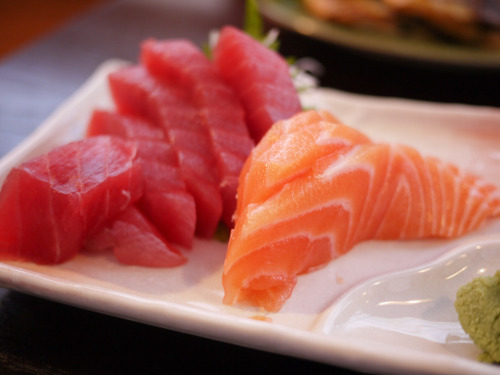
"Lipid" is another name for fat.There are many important biochemical roles that lipids play in your body; they're also important in our diet. Different classes of lipids have different structural and functional roles in the body; in the diet, fats are a rich source of energy and provide for cellular needs.

Lipids In Our Daily Lives!
Lipids/fats play an essential role in a healthy functioning person because these are used for energy storage, buoyancy, thermal insulation, and protection! The United States Department of Agriculture recommends between 20 percent to 35 percent of total calories consumed come from fat. There are three types of dietary fats: saturated fats, trans fats and unsaturated fats. Saturated fats, which come from meats and high-fat dairy products, which increase cholesterol levels. The food guide pyramid recommends less than 20 grams per day of saturated fats. Trans fats, also known as partially hydrogenated oil, typically come from baked goods and commercially fried foods, and tend to increase cholesterol as well. It is also recommended to minimize the amount of trans fats consumed per day. Unsaturated fats, which come from oils, fatty fish and avocados, amongst other items, do not raise blood cholesterol. It is recommended that the majority of fats consumed come from unsaturated fats.
- Here's a video to explain Lipids in greater depth!
http://www.youtube.com/watch?v=M1OjM0IKr7o

Polyunsaturated Fats
http://www.youtube.com/watch?v=M1OjM0IKr7o

Healthy Fats!
Polyunsaturated Fats
Polyunsaturated fats are essential for good health. Omega-3 fatty acids are a polyunsaturated fat that your body cannot make, so it must get them from your diet. Omega-3 fatty acids promote healthy cholesterol levels and help control blood pressure. They also contribute to brain development and function and ease inflammation.
Examples of polyunsaturated fats are fish, including salmon, tuna and halibut. These are all good sources.


Want to live a non suffering, long, healthy, disease free life? Choose good fats; be fat with good fats! :)
Which would you rather consume?Good fats or the bad fats?

RESOURCES:
http://biology.clc.uc.edu/courses/bio104/lipids.htm
http://www.umm.edu/altmed/articles/omega-3-000316.htm
Examples of polyunsaturated fats are fish, including salmon, tuna and halibut. These are all good sources.
Monounsaturated Fats
Monounsaturated fats lower your risk for heart disease by reducing bad low density lipoprotein cholesterol levels. This type of fat can also provide our body with vitamin E, an antioxidant, something we all mostly need because we do not get enough of it.
Examples of monounsaturated fat include olive oil, canola oil, avocados, peanut butter and nuts and seeds.
Monounsaturated fats lower your risk for heart disease by reducing bad low density lipoprotein cholesterol levels. This type of fat can also provide our body with vitamin E, an antioxidant, something we all mostly need because we do not get enough of it.
Examples of monounsaturated fat include olive oil, canola oil, avocados, peanut butter and nuts and seeds.

Yucky Fats!
| BAD FATS | |
| Saturated fat | Trans fat |
|
|
| Sources of Saturated Fats | Healthier Options |
Butter
|
Olive oil
|
Cheese
|
Low-fat or reduced-fat cheese
|
Red meat
|
White meat chicken or turkey
|
Cream
|
Low-fat milk or fat-free creamer
|
Eggs
|
Egg whites, an egg substitute (e.g. Eggbeaters), or tofu
|
Ice cream
|
Frozen yogurt or reduced fat ice cream
|
Whole milk
|
Skim or 1% milk
|
Sour cream
|
Plain, non-fat yogurt
|
Risks of too much or too little intake of Lipids/Fats!
Harvard School of Public Health says you do not need to consume any saturated fat from
foods because your body can make what it requires for normal function. Trans fat is thick
and is solid at room temperature and can clog your arteries. Unhealthy fats together with
cholesterol form plaque, which builds up inside your arteries, blocks the flow of oxygenated
blood to your heart and increases your risk of heart attack. Also, there had been research done
by scientists at the University of Las Palmas de Gran Canaria in Spain, published in the
Public Library of Science journal "PLoS One" in 2011, discovered that consumption of trans
fats increases the risk of depression, whereas consumption of monounsaturated and
polyunsaturated fats reduces risk.
foods because your body can make what it requires for normal function. Trans fat is thick
and is solid at room temperature and can clog your arteries. Unhealthy fats together with
cholesterol form plaque, which builds up inside your arteries, blocks the flow of oxygenated
blood to your heart and increases your risk of heart attack. Also, there had been research done
by scientists at the University of Las Palmas de Gran Canaria in Spain, published in the
Public Library of Science journal "PLoS One" in 2011, discovered that consumption of trans
fats increases the risk of depression, whereas consumption of monounsaturated and
polyunsaturated fats reduces risk.

Want to live a non suffering, long, healthy, disease free life? Choose good fats; be fat with good fats! :)

RESOURCES:
http://biology.clc.uc.edu/courses/bio104/lipids.htm
http://www.umm.edu/altmed/articles/omega-3-000316.htm





isn't it like cis fats have the H's on the same side and trans have it on different sides of the double bond?
ReplyDeleteYes Ahmara, in a "cis" fatty acid, the hydrogen bonds are on the same side; in a "trans" fatty acid, they are on opposite sides (or across, hence the "trans"). Trans fatty acids are kinked rather than straight.
ReplyDelete